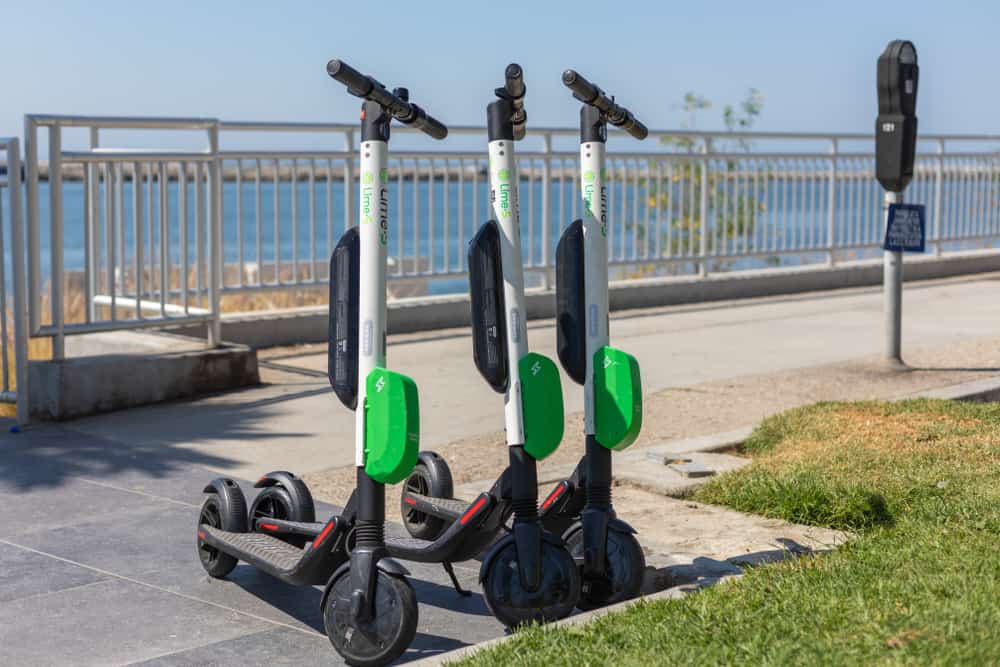
As urban spaces keep expanding their boundaries due to a steady population influx, they are faced with increased road congestion as more vehicles take to the streets. Though some states and cities are combating this congestion by enforcing regulatory restrictions on older and/or highly polluting vehicles, this does nothing to fix the root cause – increasing population density and the limited means of alternative transportation.
Management consulting firm McKinsey & Company has released a report on how new-age mobility possibilities could transform the way Americans move in the future. “Four essential innovations are rapidly redefining modern mobility: autonomous vehicles (AVs); connected cars; electric vehicles (EVs); and shared-mobility services. These technologies will likely converge – think autonomous, electric-powered robo-taxis – and contribute to a new era of personal mobility,” observed McKinsey.
This decade has seen a visible trend in the growth of all the mobility possibilities mentioned above. Though revenue of new-age mobility systems – both disruptive business models and technologies – accounted for just 2.6 percent of total mobility revenue in 2017, McKinsey estimates that this will grow to at least 31 percent of total revenue by 2030, even if the autonomous vehicle disruption is limited in scope.
A large part of this growth would be through the use of data-enabled services in vehicles, making them smarter and more responsive to individual drivers – a transition that has parallels with the evolution of cell phones to smartphones over the last decade. McKinsey believes that autonomous robo-taxis will be a disruption to the on-demand cab hailing market, generating close to $1.5-2.0 trillion by 2030.
Though no one is certain on when fully autonomous vehicles will be on roadways, the market could see the commercial deployment of SAE Level 4 autonomous vehicles soon. Waymo, the autonomous driving Google-spinoff, recently announced that it would be producing Level 4 self-driving vehicles at its facility in Detroit, Michigan. Taxi-hailing companies like Uber and Lyft are in pursuit of automation as well; cutting out taxi drivers would help them achieve profitability.
McKinsey waves aside skepticism concerning the sustained growth of ridesharing in the future, saying the overall on-demand cab-hailing revenue has grown by approximately 130 percent per annum since 2013, amounting to nearly $30 billion in 2018. “Those revenues are largely a function of three things: the price of fares; the number of users; and the miles each user travels (itself a function of total trips multiplied by miles per trip),” said McKinsey.
The number of users has snowballed, with on-demand cab hailing being offered in over 260 cities across the U.S. Though the fare price is around $2.50 per mile, making it multiple times more expensive compared to the average cost of vehicle ownership ($0.65 per mile if vehicles drive around 12,000 to 13,000 miles annually), ridesharing growth can be attributed to customers finding ridesharing an easier way to travel than owning a vehicle.
Shared mobility like carpooling has still not caught mainstream attention, with it contributing just about 5 percent of the total e-cab hailing market. McKinsey advocates for the introduction of purpose-built shuttles, which could offer greater personal comfort and privacy in a shared vehicle – thereby increasing its chances of adoption.
That being said, e-cab hailing has not only eaten into the traditional cab market, but has also increased the share of people who opt for cab services rather than take public transport or their own vehicle. Cities have recorded an increase in the number of vehicles due to e-cab hailing, which might be a problem going forward. Enter micro mobility – the dockless two-wheel mobility alternative that can take cars off the street, while also reducing carbon footprint.
Dockless bike and electric scooter sharing startups like Bird and Lime are among the fastest to attain unicorn status (a startup valued at over $1 billion). “Across 2017 and 2018, they logged a staggering 10 times more trips during their first 12 months than did traditional-vehicle-based e-hailing solutions during the same early stages,” stated McKinsey.
The game changer, McKinsey believes, will be transportation autonomy. “Level 4 autonomy is expected to be technically capable and address 60 to 75 percent of all miles traveled in the United States, in both urban and suburban areas, by 2025,” it said. “Costs are expected to fall to $0.60-$0.70 per mile by 2030. This is a significant move as it brings cost per mile lower than personal vehicle ownership.”
The future is definitely in shared mobility, with autonomous vehicles adding to the rate at which people shift from owning vehicles to mobility-as-a-service (MaaS). McKinsey believes that Level 4 autonomy will help ridesharing companies reach, and even exceed, more than 20 percent of shared mobility in passenger-miles traveled in urban and suburban areas.
“Early data suggest that high-income urban households are already shedding cars in favor of other mobility choices, while younger generations use ridesharing two to three times more than do those older than 55 and are increasingly less likely to get driver’s licenses,” said McKinsey. “These data points suggest an openness to replace owned cars – or at least, use one’s owned car much less – because of shared mobility.”










